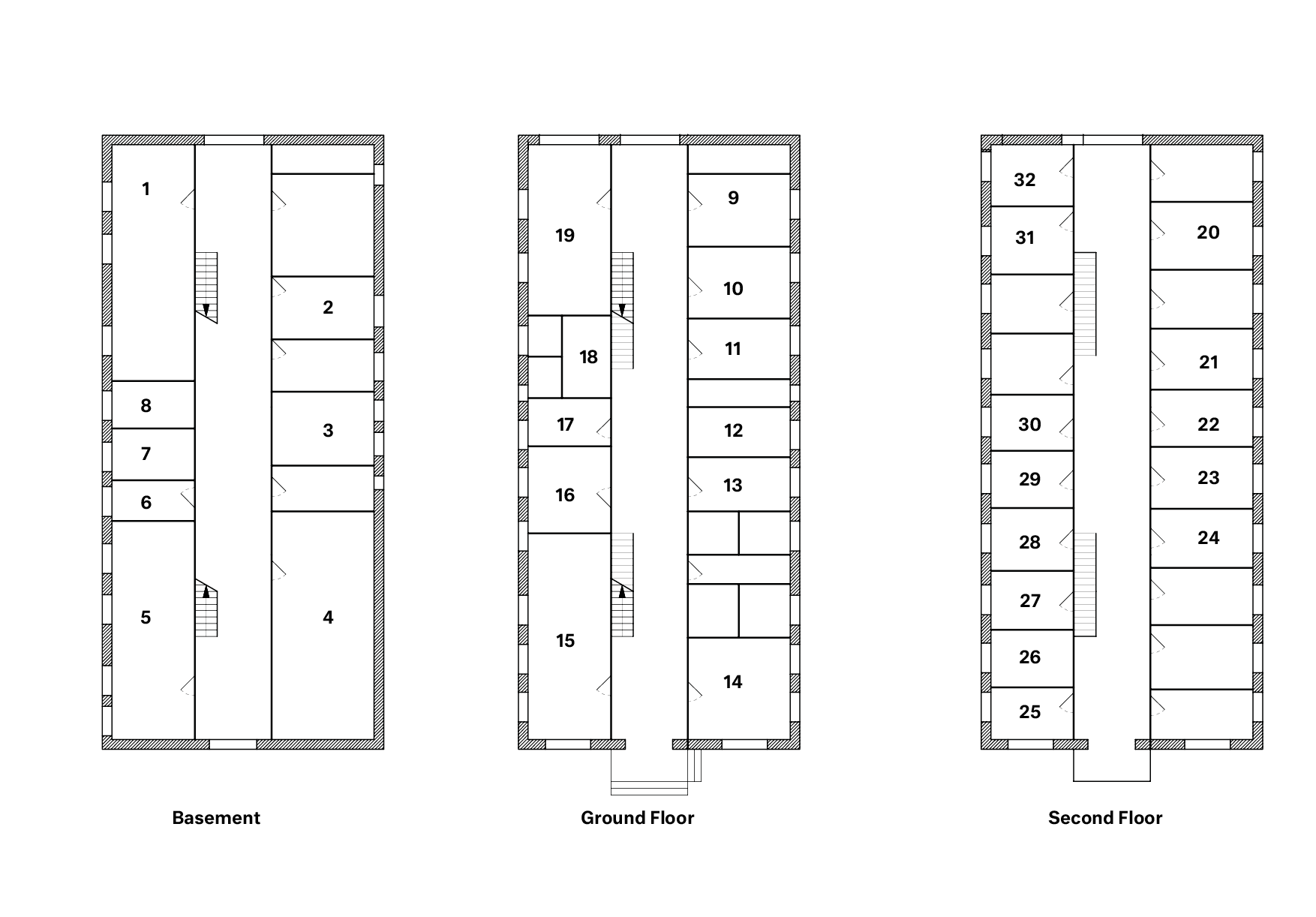Mormons
![]()
Salt Like City, Utah, USA
Religious, Christian, Mormon
Private Property
Plural Marriage
1823 - Present

Salt Like City, Utah, USA
Religious, Christian, Mormon
Private Property
Plural Marriage
1823 - Present
1 School Room 2 Pantry 3 Weaving Room 4 General Cellar 5 Dining Room 5 Dishes 7 Kitchen 8 Washroom 9 Servant 10 Aunt Fanny 11 Emily P. 12 Lucy B. 13 Clara D. + Kids 14 Lucy D. 15 Parlor 16 Emiline 17 Mrs. Cobb18 Emiline Kids 19 Servant 20 Margarent P. 21 Eliza S. 22 Mrs. Weston 23 Harriet C. 24 Mrs. Hampton 25 Harriet B. 26 Eliza B. 27 Harriet S. 28 Charlotte C. 29 Zins D. 30 Martha B. 31 EllenR. 32 Susan S.
![1867 Floor plans of the Lion House. Plan: Drawn From The Mormon Prophet Harem; or, An Authentic History of Brigham Young, His Numerous Wives, and Children by J. S. Goodman. Utah State Historical Society]()
The Lion House in Salt Lake City, one of the most famous examples of polygamous architecture, housed the majority of Brigham Young’s twenty-seven wives and fifty-six children. The three story house resembles a dormitory, and contains a weaving room, kitchen, and dining room that seats seventy people. Seating in the dining room, as well as arrangement of rooms and allotment of space reflects the complex dynamics that existed in plural marriage.
The needs of polygamist Mormon families varied depending on the number of wives, and there is a clear hierarchy in the arrangement of bedrooms and amount of space each wife receives. In the case of the Lion House, space was allotted according to the number of children. Wives with children were given large, multiroom apartments on the first floor. Wives with no children were given small, but equally small, rooms on the upper floor. Servants and older children also lived on the top floor.

The Lion House in Salt Lake City, one of the most famous examples of polygamous architecture, housed the majority of Brigham Young’s twenty-seven wives and fifty-six children. The three story house resembles a dormitory, and contains a weaving room, kitchen, and dining room that seats seventy people. Seating in the dining room, as well as arrangement of rooms and allotment of space reflects the complex dynamics that existed in plural marriage.
The needs of polygamist Mormon families varied depending on the number of wives, and there is a clear hierarchy in the arrangement of bedrooms and amount of space each wife receives. In the case of the Lion House, space was allotted according to the number of children. Wives with children were given large, multiroom apartments on the first floor. Wives with no children were given small, but equally small, rooms on the upper floor. Servants and older children also lived on the top floor.


Sutton, Robert P. “Etienne Cabet and the Nauvoo Icarians: The Mormon Interface.” The John Whitmer Historical Association Journal, 2002, 43–50. http://www.jstor.org/stable/43200389.
Ibid, 47
Carter, Thomas. “Living the Principle: Mormon Polygamous Housing in Nineteenth-Century Utah.” Winterthur Portfolio 35, no. 4 (2000): 223–51. http://www.jstor.org/stable/1215334. Page 223.
Ibid, 223
Ibid, 232
Ibid, 245